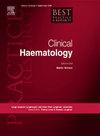Cytokines in transplantation tolerance
IF 2
4区 医学
Q3 HEMATOLOGY
引用次数: 0
Abstract
Transplantation tolerance is an immunologic state in which a transplant recipient's immune system does not mount a destructive immune response to an allograft. Tolerance offers an alternative to lifelong immunosuppression, potentially extending both allograft and patient survival by reducing transplant-related morbidity. Currently, the only clinically relevant approaches to achieve allograft tolerance rely on induction of donor hematopoietic chimerism through bone marrow or hematopoietic cell transplantation.
There are two known types of T cell tolerance to alloantigens – central and peripheral. In central tolerance, alloantigen presentation in the thymic medulla results in clonal deletion of alloreactive immature lymphocytes. Peripheral tolerance is mediated by development of tolerogenic cell populations such as immature dendritic cells and regulatory T cells which suppress or delete alloreactive immune cells in the periphery.
As the signaling molecules secreted by immune cells to orchestrate immune responses, cytokines are important in development of both central and peripheral tolerance and are critical in mediating both allograft rejection and tolerance. Understanding the immunology underlying the effects of cytokines on the immune system can help us to better understand their role in tolerance and to leverage that understanding to more reliably and safely induce transplantation tolerance.
细胞因子在移植耐受中的作用
移植耐受是一种免疫状态,在这种状态下,移植受体的免疫系统不会对同种异体移植物产生破坏性的免疫反应。耐受性提供了终身免疫抑制的另一种选择,通过减少移植相关的发病率,可能延长同种异体移植和患者的生存时间。目前,实现同种异体移植物耐受的唯一临床相关方法依赖于通过骨髓或造血细胞移植诱导供体造血嵌合。有两种已知的T细胞对异体抗原的耐受性-中央和外周。在中枢耐受中,同种异体抗原呈递胸腺髓质导致同种异体反应性未成熟淋巴细胞的克隆性缺失。外周耐受是由外周耐受细胞群的发育介导的,如未成熟的树突状细胞和调节性T细胞,它们抑制或删除外周的同种异体反应性免疫细胞。细胞因子作为免疫细胞分泌的调节免疫反应的信号分子,在中枢和外周耐受的发展中都起着重要作用,在介导同种异体移植排斥和耐受中都起着关键作用。了解细胞因子对免疫系统影响的免疫学基础可以帮助我们更好地理解它们在耐受中的作用,并利用这种理解更可靠、更安全地诱导移植耐受。
本文章由计算机程序翻译,如有差异,请以英文原文为准。
求助全文
约1分钟内获得全文
求助全文
来源期刊
CiteScore
4.20
自引率
0.00%
发文量
42
审稿时长
35 days
期刊介绍:
Best Practice & Research Clinical Haematology publishes review articles integrating the results from the latest original research articles into practical, evidence-based review articles. These articles seek to address the key clinical issues of diagnosis, treatment and patient management. Each issue follows a problem-orientated approach which focuses on the key questions to be addressed, clearly defining what is known and not known, covering the spectrum of clinical and laboratory haematological practice and research. Although most reviews are invited, the Editor welcomes suggestions from potential authors.

 求助内容:
求助内容: 应助结果提醒方式:
应助结果提醒方式:


